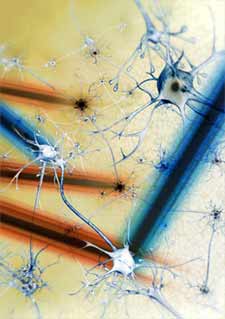
The new technology involves merging a fast-moving laser beam with a special microscope. “Most microscopes can only study cell function in two dimensions. To look at different planes, you have move your preparation (of cells) or the objective lens. That takes time, and we are looking at processes that happen in milliseconds,†said Dr. Gaddum Duemani Reddy, an M.D. /Ph.D. student at BCM at Houston and Rice University and also first author of the study.
The scientists moved a laser beam in three dimensions quickly and adapted it to a multi-photon microscope. This helped them ‘see’ a neuron and its functions in a three dimensional plane. A multiphoton microscope is the one that enables viewing of tissues in sections, i.e., in different optical planes. There also exists a conventional microscope having the same function; however, it is very slow. “With ours, you can do it very quickly. We are starting to see how a single neuron behaves in our laboratory,†said Dr. Reddy.
So far only a single neuron has been studied with the help of this technology. According to Dr. Reddy, the next step involves viewing clusters and colonies of neurons which serve a bigger objective of viewing the complete neuron interactivity. “At present, the technology is applied in my lab to study information processing of single neurons in brain slice preparations by 3D multi-site optical recording,†said Dr. Peter Saggau, professor of neuroscience at BCM and the paper’s senior author.
Dr. Peter is on his way to collaborate with other labs where the new technology can be used in different other ways. The two uses of this combination that have been identified are monitoring the neural activity in brains of lab animals and optically monitoring the stimulation of acoustic nerve which is concerned with hearing, thus facilitating reinstating hearing in lab animals who have non-working inner-ear receptors.
